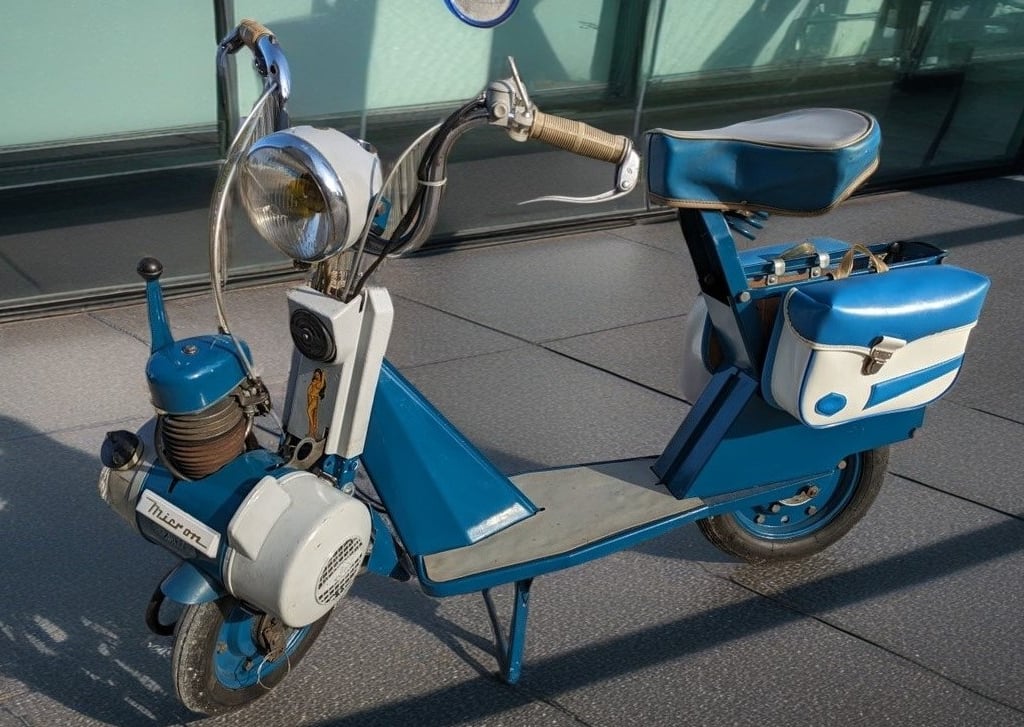The 1968 Solex Micron: A Tiny Titan of the Moped World
The 1968 Solex Micron was a unique moped with small wheels and no pedals, powered by a 49cc two-stroke engine. It represented the innovative spirit of the 1960s and became a cultural icon. Today, it is highly sought-after by collectors and enthusiasts.
2/18/20242 min read


The 1968 Solex Micron: A Tiny Titan of the Moped World
Introduction
The Solex Micron represents one of the most intriguing chapters in the history of mopeds. Introduced in 1968 by the French manufacturer Solex, this diminutive moped stood out with its exceptionally small wheels and the absence of pedals, a stark contrast to the bulkier designs of the time. It was powered by a modest 49cc two-stroke engine, producing a humble 0.78 horsepower, enough to ferry its riders through the bustling European streets. The Micron's unique aesthetic and functionality have cemented its place as a classic, capturing a niche segment of vintage moped enthusiasts who appreciate its quirky charm and simplistic engineering.
Development and History
Conceived during the culturally vibrant 1960s, the Solex Micron was a product of its time, exuding the period's innovative spirit and desire for personal freedom. It emerged as a more compact and affordable alternative to traditional mopeds and motorcycles, ideal for the urban dweller seeking a small footprint vehicle. Despite its limited production span, the legacy of the Micron persists, retaining a modest but enthusiastic following. The minimalist design philosophy behind the Solex Micron anticipated the modern trend towards compact urban vehicles, embodying a forward-thinking approach to mobility.
Technical Specifications
The Solex Micron's technical specifications were noteworthy for their simplicity and efficiency during a time when mopeds were gaining popularity as an alternative form of urban transportation. Its engine was a 49cc two-stroke model, which yielded a modest 0.78 horsepower, routed to the front wheel via a direct roller-drive system. With its small size and lack of pedals, the Micron was designed for short trips and was capable of navigating the tight streets of European cities. The moped's small wheels contributed to its compact stature, making it a unique vehicle that emphasized practicality over performance.
Cultural Significance
The Solex Micron was more than just a means of transportation; it became a cultural icon that captured the essence of the 1960s, a decade marked by a quest for freedom and a break from convention. In a time when the world was rapidly changing, the Micron provided a sense of independence and innovation. Its minimalist design went against the grain of typical motorized vehicles of the era and subsequently became a cult classic among those who valued its simplicity and ease of use. Even today, the Solex Micron is revered for its contribution to moped culture, representing a time when compact, efficient design began to take root in the collective consciousness of society.
Collectability
Today, the Solex Micron is a highly sought-after piece for moped collectors and enthusiasts of vintage transport. Its rarity adds to its allure, with intact and functioning models considered a significant find. The hobby of restoring and preserving Microns is a testament to the enduring charm of this unique moped. For many, hunting down original parts and accessories is part of the joy, speaking to the Micron’s continued legacy in the world of specialty vehicles. As a symbol of ingenuity and resourcefulness, the Solex Micron lives on as a cherished relic of a bygone era in personal transportation.
Conclusion
In the grand tapestry of moped history, the Solex Micron holds a special place. Its significance lies not just in its technical achievements, but in the cultural wave it rode during its inception. Through its small stature and innovative design, it became a representation of the freedom and rebellion that characterized the 1960s. As we conclude, the Solex Micron stands as a testament to a period when the boundaries of design and transport were being reimagined, leaving an indelible mark on the collective memory of moped enthusiasts and on the broader narrative of personal transportation.
